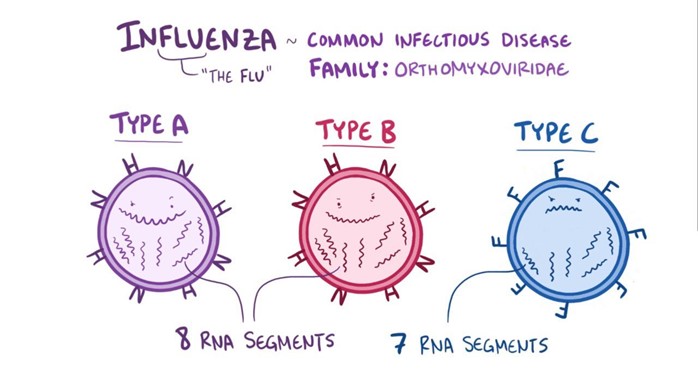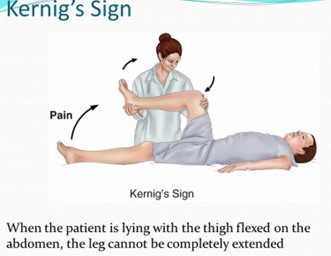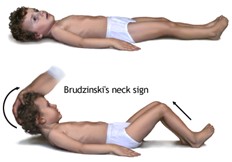The school nurse identified 12 students with confirmed cases of influenza A. The families of the children are advised to keep the children home for a minimum of 5 to 7 days. Which of the following is an appropriate action by the nurse?
Discipline in the school setting for improper handwashing.
Education regarding respiratory and hand hygiene.
Running a mandatory flu clinic.
Closing the school for 6 weeks.
The Correct Answer is B
Choice A reason: Discipline in the school setting for improper handwashing is not an appropriate action by the nurse, as it may not prevent the spread of influenza or promote healthy behaviors. Influenza is a viral infection that affects the respiratory system and can be transmitted by direct or indirect contact with respiratory droplets from an infected person. Handwashing is one of the most effective ways to prevent the transmission of influenza and other infectious diseases, but it requires proper technique, frequency, and duration. The nurse should not punish or blame the students for their handwashing habits but rather educate and encourage them to wash their hands with soap and water for at least 20 seconds, especially before and after eating, after using the bathroom, after coughing or sneezing, and after touching potentially contaminated surfaces.
Choice B reason: Education regarding respiratory and hand hygiene is an appropriate action by the nurse, as it helps to prevent the spread of influenza and promote healthy behaviors. The nurse should provide accurate and relevant information to the students, staff, and parents about the causes, symptoms, prevention, and treatment of influenza. The nurse should also teach and demonstrate proper respiratory and hand hygiene practices, such as covering the mouth and nose with a tissue or elbow when coughing or sneezing, disposing of used tissues in a trash can, washing hands frequently with soap and water or using alcohol-based hand sanitizer, avoiding touching the eyes, nose, and mouth, and staying away from sick people.
Choice C reason: Running a mandatory flu clinic is not an appropriate action by the nurse, as it may not be feasible, ethical, or effective in preventing influenza. Influenza vaccination is one of the best ways to prevent influenza and its complications, but it requires informed consent, adequate supply, trained personnel, and appropriate timing. The nurse cannot force or coerce anyone to receive the flu vaccine without their permission or against their wishes. The nurse should respect the autonomy and preferences of the students, staff, and parents, and provide them with evidence-based information about the benefits and risks of influenza vaccination. The nurse should also collaborate with the health department and other community partners to organize voluntary flu clinics that are accessible, affordable, and convenient for those who want to receive the vaccine.
Choice D reason: Closing the school for 6 weeks is not an appropriate action by the nurse, as it may not be necessary, practical, or beneficial in preventing influenza. Influenza outbreaks can vary in severity, duration, and impact depending on several factors, such as the strain of the virus, the level of immunity in the population, the availability of vaccines and antiviral medications, and the implementation of preventive measures. The nurse should monitor the situation closely and follow the guidance of the health authorities regarding school closure decisions. The nurse should also consider the potential consequences of school closure on the student's education, socialization, nutrition, safety, and mental health. The nurse should weigh the benefits and harms of school closure against other alternatives, such as increasing ventilation, cleaning and disinfecting surfaces, screening for symptoms, isolating sick students or staff members, reducing class size or mixing groups.

Nursing Test Bank
Naxlex Comprehensive Predictor Exams
Related Questions
Correct Answer is A
Explanation
Choice A reason: It is a tool that is used to determine your maximum level of self-sufficiency as the appropriate nursing response, as it accurately describes the purpose and function of the FIM. The FIM measures how much assistance you need to perform 18 activities of daily living, such as eating, dressing, toileting, walking, and communicating. The FIM helps to evaluate your functional status, monitor your progress, and plan your rehabilitation goals and interventions. ¹²³
Choice B reason: It is a test that determines which activities you feel most comfortable performing is not an appropriate nursing response, as it does not reflect the objective and standardized nature of the FIM. The FIM is not a subjective or self-reported measure of your preferences or comfort level, but rather an observational and rating scale that assesses your actual performance and independence in various tasks. The FIM uses a 7-point ordinal scale that ranges from 1 (total assistance) to 7 (complete independence) and requires trained and certified raters to administer and score it. ¹²³
Choice C reason: It is a tool used by insurance companies to determine qualifications for medical reimbursement is not an appropriate nursing response, as it does not capture the primary purpose and benefit of the FIM. The FIM is not a financial or administrative tool that determines your eligibility or coverage for medical services, but rather a clinical and research tool that measures your functional outcomes and quality of care. The FIM provides a uniform system of measurement for disability based on the International Classification of Impairment, Disabilities, and Handicaps and allows for comparison and evaluation of different rehabilitation programs and settings. ¹²³
Choice D reason: It is a tool that is used to assess what services you will need a home health aide to perform for you is not an appropriate nursing response, as it does not reflect the comprehensive and multidimensional scope of the FIM. The FIM is not a specific or limited tool that assesses only your home care needs or dependence on others, but rather a general and broad tool that assesses your functional abilities and disabilities in various domains and environments. The FIM covers both motor and cognitive aspects of functioning, such as comprehension, expression, social interaction, problem-solving, and memory. The FIM can be used with all diagnoses within rehabilitation and can be applied across different levels and settings of care.
Correct Answer is D
Explanation
Choice A reason: Decreasing bright lights is an appropriate action for a nurse to take when caring for a client who has signs of meningitis, as it helps to reduce the photophobia (sensitivity to light) and headache that are common symptoms of the condition. However, this action is not the first priority, as it does not prevent the transmission of the infection or treat the underlying cause.
Choice B reason: Initiating IV access is an appropriate action for a nurse to take when caring for a client who has signs of meningitis, as it facilitates the administration of fluids, medications, and blood products that may be needed to manage the condition. However, this action is not the first priority, as it does not prevent the transmission of the infection or treat the underlying cause.
Choice C reason: Administering antibiotics is an appropriate action for a nurse to take when caring for a client who has signs of meningitis, as it helps to treat the bacterial infection that is the most common cause of the condition. However, this action is not the first priority, as it requires a prescription from the health care provider and confirmation of the diagnosis by laboratory tests such as blood culture or cerebrospinal fluid analysis.
Choice D reason: Implementing droplet precautions is the first priority action for a nurse to take when caring for a client who has signs of meningitis, as it helps to prevent the spread of the infection to other clients and staff members. Droplet precautions are a type of isolation precautions that are used for infections that are transmitted by respiratory droplets, such as meningitis, influenza, and pertussis. Droplet precautions involve wearing a surgical mask when entering the client's room, placing the client in a private room or cohorting with other clients who have the same infection, and limiting visitors and staff contact with the client.


Whether you are a student looking to ace your exams or a practicing nurse seeking to enhance your expertise , our nursing education contents will empower you with the confidence and competence to make a difference in the lives of patients and become a respected leader in the healthcare field.
Visit Naxlex, invest in your future and unlock endless possibilities with our unparalleled nursing education contents today
Report Wrong Answer on the Current Question
Do you disagree with the answer? If yes, what is your expected answer? Explain.
Kindly be descriptive with the issue you are facing.
